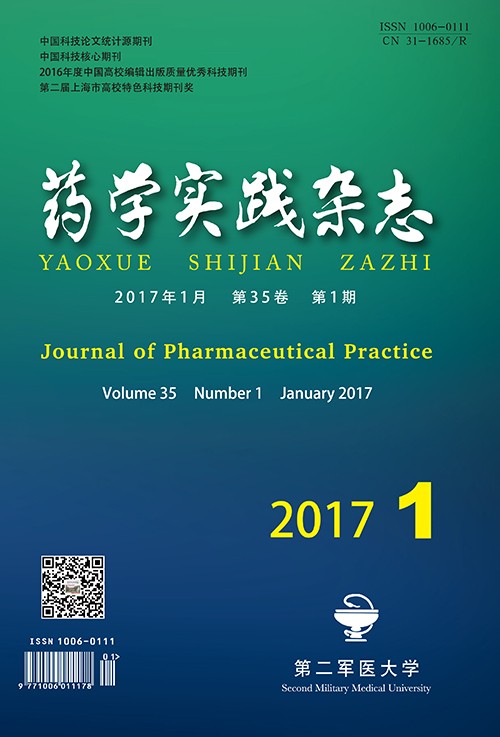|
[1]
|
Ghodke-Puranik Y, Thorn CF, Lamba JK, et al. Valproic acid pathway:pharmacokinetics and pharmacodynamics[J]. Pharmacogenet Genom 2013, 23(4):236-241. |
|
[2]
|
冯亚娟,周建华,吴干斌,等. 丙戊酸代谢相关CYP2C19基因多态性在癫痫患儿体内的分布及治疗个体化研究[J]. 中国实用神经疾病杂志,2015,1(5):49-52. |
|
[3]
|
陈蕊,张明. 丙戊酸相关肝损害的治疗进展[J]. 中国新药与临床杂志,2015,34(6):405-409. |
|
[4]
|
Schmid MM, Freudenmann RW, Keller F, et al. Non-fatal and fatal liver failure associated with valproic acid[J]. Pharmacopsychiatry, 2013, 46(02):63-68. |
|
[5]
|
Nanau RM, Neuman MG. Adverse drug reactions induced by valproic acid[J]. Clin Biochem, 2013, 46(15):1323-1338. |
|
[6]
|
Kuzniecky RI, Barkovich AJ. Malformations of cortical development and epilepsy[J]. Brain Dev, 2001, 23(1):2-11. |
|
[7]
|
李新林,赵明明,肇丽梅,等. 丙戊酸群体药代动力学研究进展[J]. 实用药物与临床,2014,17(3):345-349. |
|
[8]
|
Leppik IE,Bimbaum AK. Epilepsy in the elderly[J].Ann N Y Acad Sci,2010,1184:208-224. |
|
[9]
|
游春华,高守红,陈万生,等. 群体药代动力学用于丙戊酸钠个体化给药[J]. 第二军医大学学报,2015,36(12):1-4. |
|
[10]
|
万长亮,王志纲. 丙戊酸血药浓度的研究进展[J]. 内蒙古医学院学报,2010,32(4):31-35. |
|
[11]
|
白向荣,姜德春,王育琴. 基因多态性与丙戊酸的药物代谢[J]. 中国药物依赖性杂志,2007,16(4):241-244. |
|
[12]
|
储小曼,郭岑,张丽芬. 丙戊酸的代谢特征与其肝毒性的相关性[J]. 中国医学院杂志,2013,33(19):1611-1614. |
|
[13]
|
Surendradoss J, Chang TKH, Abbott FS. Assessment of the role of in situ generated (E)-2, 4-diene-valproic acid in the toxicity of valproic acid and (E)-2-ene-valproic acid in sandwich-cultured rat hepatocytes[J]. Toxico Appl Pharm, 2012, 264(3):413-422. |
|
[14]
|
Kiang TKL, Teng XW, Karagiozov S, et al. Role of oxidative metabolism in the effect of valproic acid on markers of cell viability, necrosis, and oxidative stress in sandwich-cultured rat hepatocytes[J]. Toxicol Sci, 2010, 118(2):501-509. |
|
[15]
|
刘爱旗,夏璐. CCK-8法与MTT法检测兔成纤维细胞活性的比较研究[J]. 中国医学创新,2013,10(2):12-13. |
|
[16]
|
陈海鹰,曹雨诞,颜晓静,等. 醋制降低京大戟对人正常肝细胞L02的毒性及机制研究[J].中国中药杂志,2013,38(6):866-870. |
|
[17]
|
王灿,马虹英,王方杰,等.丙戊酸肝毒性的早期预警及预防研究状况[J].中国临床药理学杂志,2015,31(2):150-154. |
|
[18]
|
Abarikwu SO, Farombi EO, Pant AB. Biflavanone-kolaviron protects human dopaminergic SH-SY5Y cells against atrazine induced toxic insult[J]. Toxicol In Vitro, 2011, 25(4):848-858. |
|
[19]
|
Lee MS, Lee YJ, Kim BJ, et al. The relationship between glucuronide conjugate levels and hepatotoxicity after oral administration of valproic acid[J]. Arch Pharm Res, 2009, 32(7):1029-1035. |
|
[20]
|
Chen ZJ,Wang XD,Wang HS,et al.Simultaneous determination of valproic and 2-propyl-4-pentenoic acid for the prediction of clinical adverse effects in Chinese patients with epileosy[J]. Seizure,2012,21:110-117. |
|
[21]
|
Gao S, Miao H, Tao X, et al. LC-MS/MS method for simultaneous determination of valproic acid and major metabolites in human plasma[J]. J Chromatogr B Analyt Technol Biomed Life Sci, 2011, 879(21):1939-1944. |









 DownLoad:
DownLoad: